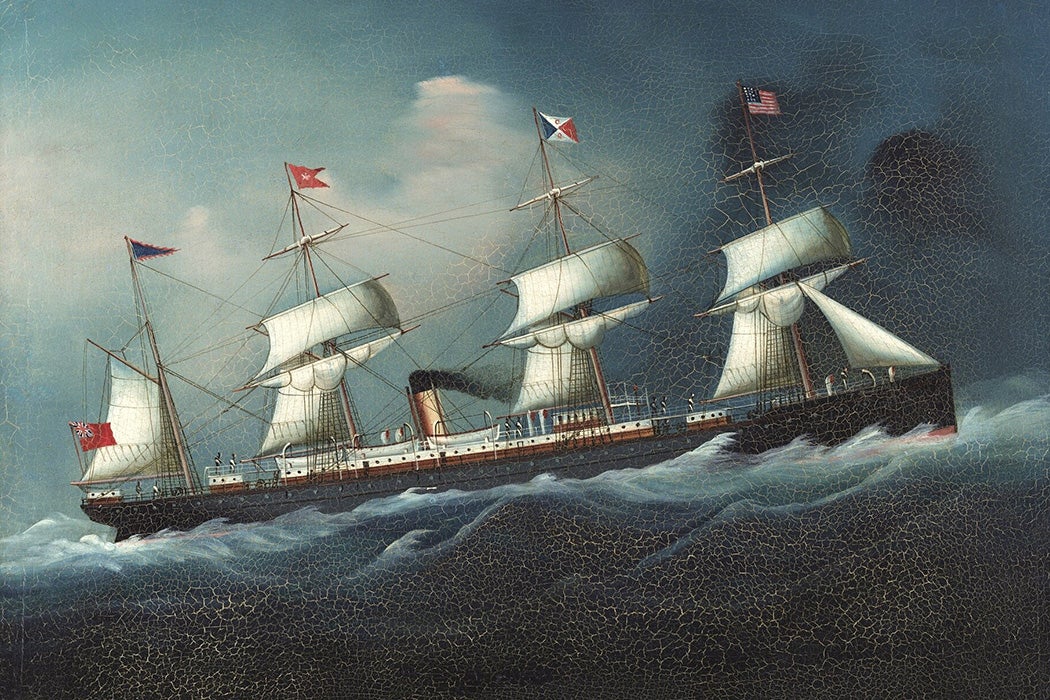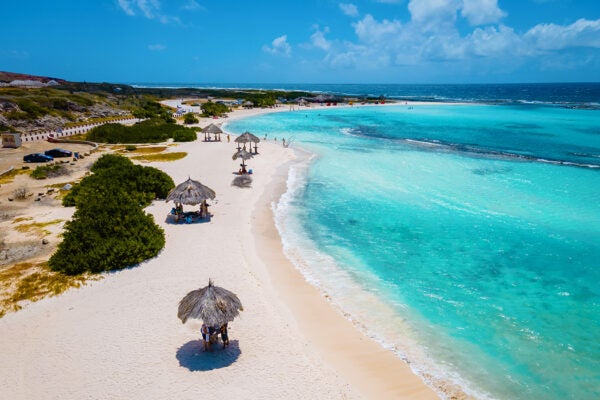Ella Sheldon was overcome by a “sudden spasm of loneliness” as the SS Belgic steamed through San Francisco Bay on the afternoon of December 15, 1892. She imagined that she must look as alone as she felt to the friends who waved from the wharf rapidly fading from sight. “One forlorn little female figure dressed in black standing outside the saloon door apart from the strange men who swarmed the decks could not look otherwise,” Sheldon wrote in a steady script that belied the churning waters the ship encountered on the other side of the Golden Gate Bridge. At least, she added, the lonesomeness she felt at her departure “would probably be relieved soon by seasickness.”
Weekly Newsletter
“The sea is a stranger to me,” Sheldon confessed in the first pages of her journal, yet the thirty-six-year-old had not hesitated a moment when she had been asked, two days earlier, to join the voyage as the stewardess—the only woman on the crew for the sixty-five-day trip to Hong Kong and back, with stops for additional passengers and cargo in Japan and Hawai‘i. For Sheldon, who had been born into a farming family in central Wisconsin before the Civil War, and for other women like her, the position of ship stewardess was a rare and, from the outside, glamorous chance to see the world in the late nineteenth and early twentieth centuries. In her travels, Sheldon would see things most Americans had encountered only in books or on canvas. “The sunset was beautiful,” she wrote on her first evening aboard the Belgic, “one of those soft pink and yellow tinted skies which we see in pictures and think was created by the artist just to see what he could do. I know now they are real.”

For at least eight years, between 1892 and 1900, Sheldon worked shipboard for the Occidental and Oriental Steamship Company and the Pacific Mail Steamship Company, traveling from San Francisco to Asia and Central America tending to the every need of the women passengers in the first-class, or “saloon,” cabins and doing the ship’s mending. On at least six of those voyages, she kept a detailed record of her travels. Now, more than 125 years later, the Ella Sheldon Diaries have been shared via JSTOR by the University of the Pacific.

In her journals, Sheldon is an eyewitness to history. In January 1893, the Belgic anchored off the coast of O‘ahu without docking in Honolulu. On board the ship, there was the threat of a smallpox outbreak, while on the island, the danger was what Sheldon termed “a revolution,” the overthrow of the Kingdom of Hawai‘i with the help of the United States military.
“We could see through the glasses our American flag floating with that of the native flag over government buildings,” Sheldon wrote. A year and a half later, she was traveling on the SS Colon, festooned for the Fourth of July 1894, when it arrived in La Libertad, El Salvador, in the uncertain days after that country’s Revolution of the 44 (Revolución de los 44). The deposed president general Carlos Ezeta had taken refuge on USS Bennington, where many of the Colon’s passengers gathered to celebrate US independence.

Sheldon also serves as an accidental (and imperfect) anthropologist, describing the new cultures she encounters through her own limited experiences, and offering momentary glimpses into the life of the Chinese sailors aboard whose contributions were often overlooked. But it’s the diarist herself and the lessons she learns about the limits of the freedom promised to a woman on the high seas that prove the most fascinating.

Sheldon’s life on land gets scarce mention in her journals, but a few details emerge in her conversations with fellow passengers. On her first journey, she was summoned by a missionary woman who joined the ship in Yokohama. Sheldon expected the woman to be seeking a remedy for seasickness but instead found her plagued by another matter. “I was thinking about you, wondering if you were saved, and so I sent for you,” the woman said. “What church do you belong to?” Surprised, Sheldon answered honestly: “To no church.”
But after the lecture she received she learned to be more circumspect. She would also be questioned about her marital status; she doesn’t appear to have ever married. Both facts set her apart from the path a woman of the era traditionally took.

On a voyage to Hong Kong in the summer of 1893, Sheldon fell out with the steward, whom she refers to only as Mr. R. She does not record the details of their argument, but does reveal that the man had been quite attentive to her, surprising her on one trip with “a genuine Wis[consin] snowball in the middle of the Pacific Ocean.” It came from the ship’s ice freezer, a new invention. On another trip, Mr. R gave her a gray kitten, which she named Dime, to alleviate the loneliness that she often felt at sea. Mr. R, Sheldon also notes, was married. Kate Nichols later lectured Mr. R about his conduct, though, Sheldon writes, “dear little soul she did not begin to know what it had been.”

When she first accepted the role of ship stewardess, Sheldon wondered “if a good woman is less a good woman on sea than on land.” But circumstances quickly led her to instead question the very idea of “a good woman.”
“Can it be possible there are morals for men and morals for women, or morals for women and none for men?” she pondered after meeting a sex worker from Hong Kong. The young woman seemed to Sheldon to possess a brilliant mind for business, running a brothel that brought in $900 a month on wine alone (Sheldon made about $50 a trip). To her own surprise, Sheldon came to respect the woman “as much if not more than the high respectable (?) gentlemen who patronize her now and whom the virtuous smile upon and invite into their homes.”

The life of a woman at sea, Sheldon discovered, was truly no freer than that of a woman on land. She encountered coworkers who “do not take direction from a woman where there is even a suggestion from a man” and found herself assigned to “the most objectionable and unwholesome room on the ship.” It was the “the same old story regarding the working women,” she wrote. “I guess women agitators have work yet in this world to do.”
Support JSTOR Daily! Join our membership program on Patreon today.





